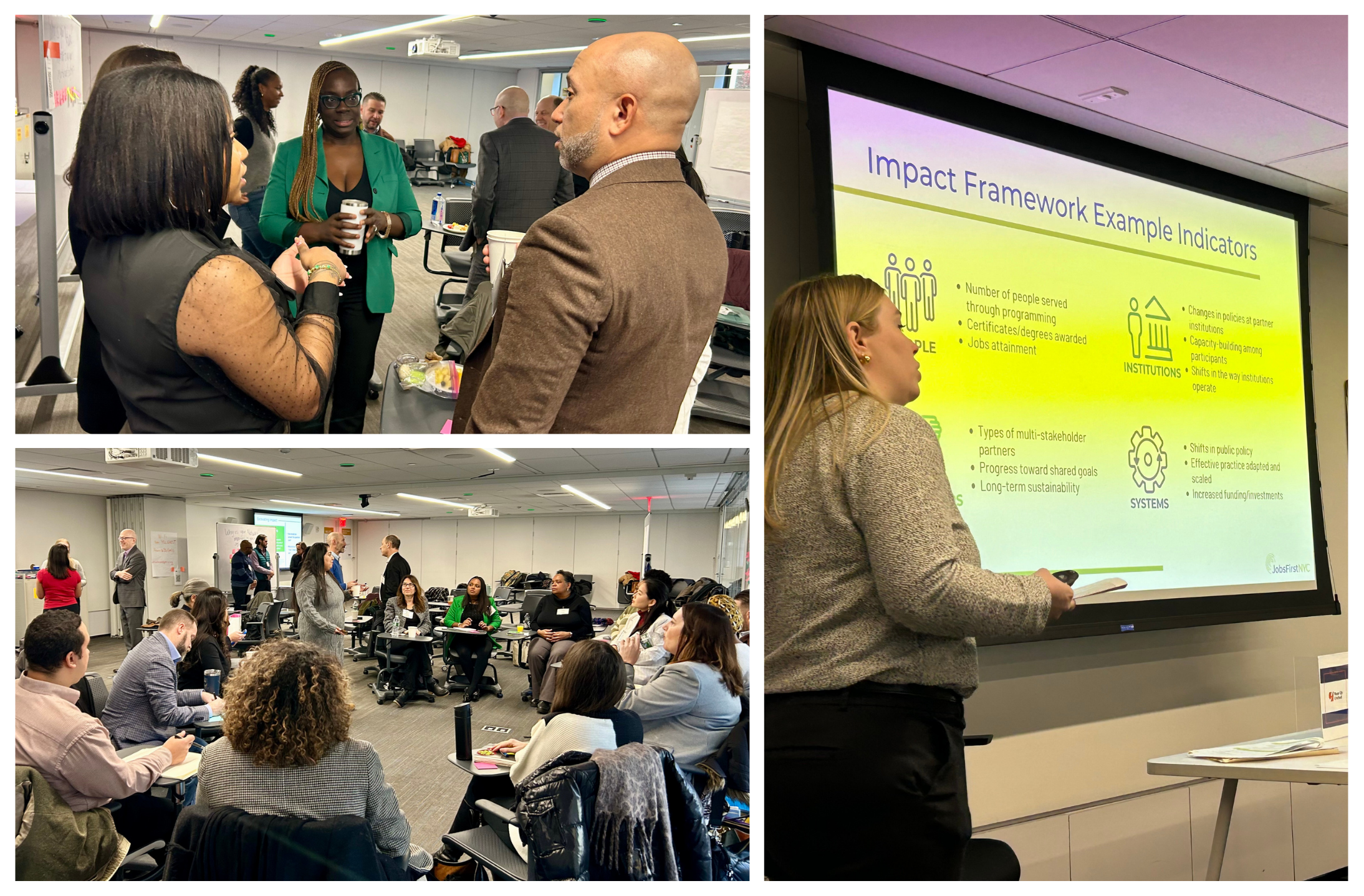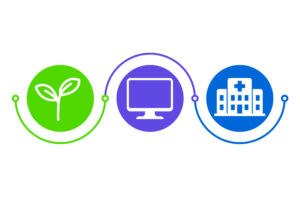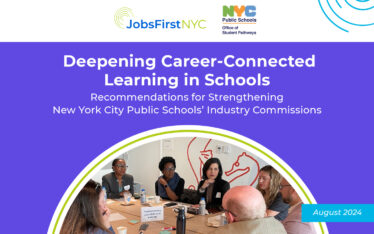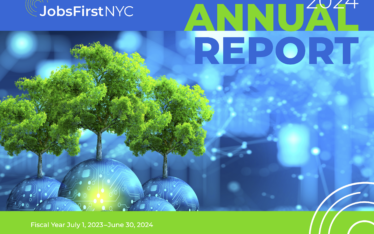In today’s rapidly evolving workforce landscape, no single organization can drive systemic change alone. Recognizing this, JobsFirstNYC launched Sector Networks—workforce ecosystem partnerships designed to build collaboration, increase economies of scale, and create sustainable solutions for jobseekers and employers alike. These networks respond directly to what the field has long demanded: collective mechanisms to drive transformational progress across New York City’s workforce landscape.
This January, JobsFirstNYC convened its first Sector Networks Leadership Forum, bringing together members to strategically plan, build and deepen connections, and co-create solutions for the year ahead. The gathering marked a pivotal moment for these partnerships, which focus on the green economy, technology, and healthcare––three sectors that are increasingly interconnected in today’s economy.
Converging Needs, Collective Action
Since inception, each network has worked to create economies of scale and use its collective power to increase impact by aligning training, employer demand, and jobseeker success. It became clear during the forum, as each partnership reflected on progress to date, that workforce solutions must be more adept at utilizing the natural convergence of sectors—from the increasing demand for cybersecurity in healthcare, to automating building systems under Local Law 97, to community health workers addressing environmental justice concerns. These overlaps present a unique opportunity to create more integrated and responsive training pathways to deepen collaboration across the three networks.
Setting the Agenda for 2025
During a “strategic sprint” session, each network reviewed the goals it had set for the year and sketched out its priorities toward achieving them. The core actions identified were responsive to the unique context of each network:
Green Economy Network:
- Coordinating the April 2025 Clean Energy Connect Expo to activate employer and training partnerships, and expand green career awareness in underrepresented boroughs.
- Advancing a network-wide referral system, mapping partner offerings and formalizing pathways into right-fit green training programs.
Healthcare Sector Network:
- Launching a referral task force of relevant staff to streamline candidate placement across partner programs and support the development of digital tools for seamless communication.
- Applying real-time labor market data to guide training alignment, employer outreach, and hiring strategies.
Tech Sector Network:
- Planning and executing a live referral event, Tech Opportunity Day, to connect waitlisted candidates to aligned training opportunities—shaped by input from employers and young adults pursuing tech careers.
- Designing and piloting a digital platform for program discovery and improving access to tech training.
Despite differing priorities, the networks shared a compelling theme: the importance of continuing to build an effective referral system to ensure that no candidate in search of training ever falls through the cracks. For example, if Johnny from East Harlem wants to become a certified nursing assistant but realizes that he lives too far from the Phipps Neighborhood Program to consistently attend the sessions, the Isaacs Center, which is closer to his home, could pick up his application. Or perhaps Taylor, a recent graduate of the Marcy Lab School, wants to brush up on her advanced cybersecurity skills to one day work for the CIA. In this referral system, the Marcy Lab School could seamlessly refer her to NPower in downtown Brooklyn.
While each network has long been working to systematize referrals across the various programs within its sector, being together in the same room helped the networks grasp the potential to build this idea out even further by creating a system that not only refers candidates across various programs within a sector but also facilitates referrals to other sectors as well. Since January, the Tech Sector Network has been testing a prototype for a digital referral system within its network; if successful, such a system could potentially be used across all three networks.
From Ideas to Action

The Power and Promise of Collaboration
This forum, and the work being done since then, has made it all the more evident that Sector Network partners have more in common than they may think and that there is no “one size fits all” solution to connecting the dots between different parts of the workforce development system. We must build on the interconnectedness of each network to create large-scale solutions for all.
As aptly noted by Annie Martinez of Year Up United: “We hope to say by the end of the year that we have learned what young people need, what employers are thinking about and planning for, and how our organizations are working together, using our smaller scale projects to amount to systems change.”
Voices from the Field: Sector Networks, In Practice and Purpose
Green Economy Network
“At its core, our mission is pretty simple—we want to build pathways to green jobs that are accessible to everyone.”
— Yasmeen Khan
Healthcare Sector Network
“There are thousands and thousands of jobs in healthcare. We want to connect individuals to the jobs and opportunities that are out there.”
— Ayesha George, STRIVE
Tech Sector Network
“Our goal is to help young adults see and understand the opportunities that are out there for them.”
— Debbie Roman, Per Scholas
Interested in joining one of our Sector Networks? Contact Malia Darby at mdarby@jobsfirstnyc.org to learn more.





